#Manx history
Text
“On board a fishing boat there were a wide variety of words which were thought to bring bad luck and therefore were replaced with ‘noa’ or safe words. Words such as ‘rat’ were prohibited and were replaced with ‘long tail fellow’, ‘ring-tailed gentleman’ and others.”
- Folklore, Stephen Harrison and Yvonne Cresswell, Cambridge University Press, 25 July 2017, edited by John Belchem.
5 notes
·
View notes
Text


‘The Sea Kingdoms: The History of Celtic Britain and Ireland’ by Alistair Moffat
#reading#books#sea kingdoms#Alistair Moffat#Celtic history#british history#scottish history#welsh history#irish history#Manx history#Cornish history#celtic culture
1 note
·
View note
Text
Here’s some historical shenanigans I’ve been getting up to… also ft. some adorable heritage sheepies.
20 notes
·
View notes
Text
actually since im already on my cat breeds soapbox i really dislike most cat breeds. i think they are pointless and we should let them fade out of existence. so many of them are just "we bred an extreme trait into this animal" and so many of them have such awful health issues it should be illegal to purposely breed one
#munchkins. cats with folded or curled ears. squished face breeds. so many that are more prone to cancer or neurological issues than others#it makes me so sad because people will compare it to dog breeds but dog breeds have purposes. jobs. history#cat breeds are like. someone in wyoming had a cat born with a genetic disability and decided to breed more of them#until cat breeds start having a purpose besides 'i want a cat that looks cool' i will always hate purebred cats#simon says#edit: holy shit i forgot my least favorite MANX CATS AND OTHER BOBBED TAIL CATS#their poor poor spines its awful. please stop making them
4 notes
·
View notes
Note
Pacing the minor pause in his demeanor whilst subjecting a glance toward the commotion which was gradually beginning to expire. The leer he caught himself committing easily churned into one excluding approval.
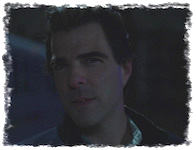
" Well... you can rest assured I had nothing to do with that tragedy. " Siphoned through guided restraint and dissected into a thinner layer of indifference.
[ You know me.. still slow, unfortunately. <3 ]

Aurora didn't say anything in response. Her gaze was still fixated on the people writhing on the floor from the previous commotion. Gingerly, she sidestepped out of the way of the mess, her curls, up in a ponytail, bounced against her oversized denim shirt. Caution had been thrown to the wind earlier that night, a small smattering of blood spatter visible on the collar of her shirt; another careless mistake.
Her small silver hoops and necklace caught the glint of the street lamps as she finally turned to face Charlie, the mask of indifference present on her face as she finally answered, "What tragedy? I don't see one."
@wraith-of-christmas-future
#descent of the historian unto madness#history abhors a paradox#aurora stantler#charlie manx#nos4a2#nos4a2 rp#sorry i know this was asked a week ago university got in the way
3 notes
·
View notes
Note
Could you talk about Gaelic? How many people are speak it today?
Indeed I can!
SCOTTISH GAELIC
"Gaelic" as a term can refer to any of the Goidelic branch of languages, which includes Irish, Scottish Gaelic, and Manx. HOWEVER, since today (November 30th) is Saint Andrew's Day, Scotland's national day, let's talk about Gàidhlig na h-Alba, or Scottish Gaelic! Latha Naomh Anndra sona dhuibh!
When referring to Scottish Gaelic, we pronounce the word "Gaelic" not as "gey-lick" but as "gal-lick", owing to its native pronunciation (which you can listen to here).
BEFORE THIS POST GETS TOO LONG, I urge the reader to consider learning this language! It's the source of my name after all ("Ian" is a form of "Iain" or "Eòin", both Gaelic forms of "John") and is the heritage language of as many as 40 million people worldwide. Even if you don't claim any Scottish ancestry, it's a beautiful and poetic language tied to an equally beautiful and poetic culture! Use it as a code language with your friends, read some classic Gaelic literature, or even pay a visit to Scotland and smugly read Gaelic road signs off to your friends/family/tour guide! (They'll love it, I promise.) I personally have been learning via Duolingo and other online resources for about 8 months now. And remember, "Is fheàrr Gàidhlig bhriste na Gàidhlig sa chiste" (better broken Gaelic than Gaelic in the coffin).
As of the 2011 Census, the total number of people within Scotland itself that can speak the language is about 57,000 people, or 1.1% of the population [1]. This is indeed a relatively small number, and according to the Endangered Languages Project the language is "Threatened", but the Scottish Government has produced Gaelic Language Plans about every five years since the passage of the Gaelic Language (Scotland) Act 2005. These plans ensure government commitment to the survival and growth of the language, and indeed the decline in speakers has slowed since 2000, and with luck these trends will reverse in the coming years.

In fact, on October 14 of this year, the Scottish Government released an updated language plan outlining the next five years of government initiatives for the language.
But what is this language?
WARNING: INCOMING HISTORY LESSON!
Scottish Gaelic is a Celtic language that was brought to the west coast of Scotland from Ireland by settlers (named "Scoti" by the Romans) sometime between 300 and 500 CE. These settlers soon established the Kingdom of Dál Riata (a name which means "Riata's territory"). This kingdom maintained close ties with Ulster (roughly modern Northern Ireland), and it was during this early period that Christianity began to take hold across Scotland, with such figures as Saint Columba founding monasteries and institutions of learning. What is today Scotland was fractured between four broad people groups at this point - the Gaels in the west, the Picts in the east, the Angles of Northumbria and Berenicia in the southeast, and the Britons of Strathclyde in the south.
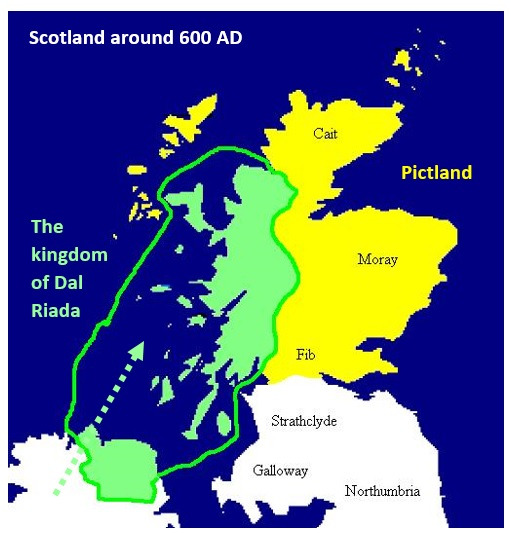
With Christianity came the rapid spread of the Gaelic language into lands outside Gaelic control, especially into the Kingdom of the Picts. Eventually, in the 860s-870s, a certain group called the Vikings appeared. (You may have heard of them.) It was at this time that Scotland unified against a common threat, solidifying the bond between the (likely) Brittonic-speaking Picts and the Gaelic-speaking Scots. Over time, Pictish identity was completely lost (leaving behind difficult-to-decipher standing stones scattered across the countryside), and a unified Kingdom of Alba appeared. (Alba means Scotland - and it's not pronounced how you might think.) Between about 1000 and 1200, Gaelic reached its greatest geographic extent, being spoken across Scotland (the islands at this time were ruled by Vikings, which I'll cover in a later post; however, Gaelic was still spoken, at least in the Western Isles). Some people argue that it was never spoken south of Lothian, but place-name evidence from the Borders calls this into question somewhat (name prefixes such as "bal-" and "kil-" are telltale signs of Gaelic settlements).
Malcolm III (of Macbeth fame), also known as Malcolm Canmore ("ceann mòr", or "big head"), married an Anglo-Saxon princess named Margaret, who had no Gaelic. It was at this time, around 1070, that the first signs of a decline in the language began to appear. Margaret brought English-speaking monks to the Lowlands, in effect drawing a cultural border between Lowlands and Highlands.
By the mid-1300s, Scots, a sister language of English (NOT a dialect!), had become the language of the courts and of the parliament. England, in all its ambition, turned its eyes northward, necessitating an independence struggle (or two, or three...), although this resistance was carried out using Scots (then dubbed "Inglis"), not Gaelic (then "Scottis").

By the time the above image was current (c. 1400), Scottish Gaelic had almost completely split away from Irish, though the written languages were (and to a rough extent, still are) rather mutually intelligible.
Over time, Gaelic became further and further marginalized by Scots. Various government initiatives worked expressly against the language, incentivizing or otherwise encouraging Highlanders to speak the "educated tongue" of the Lowlands. In Scots, Gaelic was called "Erse" (roughly, "Irish"), in a popular effort to "de-Scottify" the language. James VI (and I)'s reign marked a significant downturn in the language's usage. The language was seen as backwards, rebellious, and Catholic (a big no-no in an officially Protestant nation). The language was looked down upon in schools (not to mention broader society) from the 1600s up through the early 1900s, and English became the language of upward mobility for Highlanders and Islanders.
Fuadaichean nan Gàidheal, the Highland Clearances, were a result of the failed Jacobite rebellions throughout the 1700s and the imposition of new systems of land management and ownership. Many Highland families emigrated to the far corners of the British Empire, particularly Canada, the United States, Australia, and New Zealand. Highland culture, for all intents and purposes defunct back home in Scotland, survived in these places into the modern era.
In Canada, Gaelic found much success, especially initially. At one point, Gaelic was the third-most commonly spoken language in Canada, though usage declined markedly between the 1800s and more recent revival efforts in the late 20th century. According to the 2011 Canadian Census, 7,195 people claim "Gaelic languages" as the language they use at home (though this term also includes Irish, Welsh, and Breton, the latter two of which are not Gaelic, but Brythonic). Scottish Gaelic is taught in schools (on an opt-in basis) from primary to university level in Nova Scotia, a province whose name means "New Scotland" in Latin. In Nova Scotia, especially on Cape Breton Island, Highland culture is still very much alive.
What goes on within Gaelic?
Gaelic and its other Celtic cousins are quite unique in the European context, as they place the verb first within sentence structure. It's also quite interesting as its nouns can still inflect for the dual number (at least vestigially), a feature lost in a great many other Indo-European languages (oh, did I mention it's an Indo-European language?). If you've ever seen any written Irish or Scottish Gaelic, you may have noticed they like to put "h" after the first letter of a lot of words. This is a linguistic phenomenon known as mutation, and in this case more specifically as lenition. It changes the pronunciation of the first consonant of the word. This phenomenon has been present in the language since the days of Old Irish (and perhaps even further back into the days of Proto-Celtic).
In terms of spelling and pronunciation, it's astonishingly regular... once you figure out all the rules. There are 11-ish vowel sounds (depending on dialect), and 30 (or so) consonant sounds, a step down from Old Irish's 46 distinct consonants.
To conclude:
If you're committed to learning the language, I would recommend finding fellow learners or even native speakers online, and if you're really, REALLY committed to learning the language, I would doubly recommend making the effort to find a tutor in-person or over Zoom or another video calling service if it's within your means (although this advice goes without saying for learning any language). An institution known as Sabhal Mòr Ostaig, based in the Isle of Skye in the Western Isles of Scotland, must be mentioned in any discussion about learning Gaelic, however. According to their website, they are the "only centre of Higher and Further Education in the world that provides its learning programmes entirely through the medium of Gaelic in an immersed, language-rich environment." (This post is not sponsored.) If you have the time, the money, and the willpower, perhaps give them a look! They work closely with projects such as Tobar an Dualchais and Soillse to preserve, maintain, and revitalize Gaelic language and culture for future generations.
Follow for more linguistics and share this post! If you have any questions, feel free to ask!
#scotland#scottish#gaelic#irish language#scottish gaelic#indo european#linguistics#language#history#culture#celtic#celts#vikings
317 notes
·
View notes
Text
Index Page
Click to Help Palestine
Vetted Palestinian Fundraiser Masterpost
You can also find me @catsindoors where I discuss feline behavior, health, welfare and other related topics and at @declaweddisabledpurebred where I promote adoptable cats.
Mittens McFluffy of Tumblr = Cat’s Name
🐱 = Breed
📸 = Photographer or Source
🎨 = Color/Pattern
If the breed featured has a debilitating health issues as their defining feature I will include a [link] to information of the condition beside the breed name.
This is not comprehensive, the abscence of a [link] doesn’t mean the breed is without issue. It may just mean there isn’t one, concise artle to link. Always do your research.
Here is some recommended reading.
AAFP Position Statement Hybrid Cats
Histologic Description of Lykoi Cat
Concerns over Maine Coons on the GCCF
Lykoi Sebaceous Cysts
Manx Syndrome
Munchkin Limb Deformity
Over-typification in Maine Coon Cats
Persian Brachycephaly
Scottish Fold Osteochondrodysplasia [Examples]
If the color/pattern is relatively new, particularly rare, or affiliated with some sort of health condition I will include a [link] to information on the subject beside the color/pattern description.
The letter/number combination in the tags is determined using the Fédération Internationale Féline EMS system. I may also reference the EMS codes from GCCF, LCWW, WCF or WOF.
Here is a glossary of colloquial and breed-specific terms for colors and patterns. You can browse the different breeds, colors and patterns featured here through the breed tags or the color tags pages. These pages are not updated regularly.
You can send in pictures of your cat if you like and I will tell you what they appear to be. It is helpful to include some history on the acquisition of your cat. It is helpful to include multiple angles, varied lighting, close-up of parted fur and especially nose and paw pads. Remember that this is an educated guess only.
I will answer genetics oriented questions to the best of my ability, I have a working understanding of cat genetics but for more complicated or in-depth questions regarding genotype I recommend asking @amber-tortoiseshell. I’m most confident with my expertise on phenotype (appearance) and cat breeds.
Disclaimer: This blog is to show cat colors and patterns, I share rare or unique colors and good examples wherever I find them. Inclusion on this blog is not endorsement of the breed or breeder.
List of Cat Registries
List of Breed Clubs (TBA)
Here are some good resources to start you off:
Beware Don’t Get Scammed
Finding the Purrfect Pedigreed Kitten
Identifying a Scammer: Red Flags
How to Spot a Scam
Thinking of Buying a Pedigree Kitten? Advice for Purchasers
There are also Facebook groups which can be a useful, additional resource such as Bad Catteries Around the World, BLACKLIST Breeders Cats/Cattery Cats, Exposing Bad Catteries & Educating for Change and GOOD Catteries Around the World Reference and Reviews!
If you’re in the UK you can check Felis Brittanica’s Suspension List.
Breed Specific Groups
Abyssinian Kitten Scams and Breeder Search Guidelines
Bad Sphynx Catteries/Breeders!!!
Black List Bengal Breeder!
Maine Coon Breeders Blacklist,
Posts to Read
r/cats Bruce the Minuet
American Shorthair vs. Domestic Shorthair
Brachycephaly in Cats
The Different Bobtail Genes
Gen. Ticked British Shorthair
Highlander/Highland Lynx Health
Is It A Nebelung?
Maine Coon Phenotype
New Style vs. Old Style Maine Coons
Peterbald vs. Sphynx
Siamese vs. Oriental
Sphynx Health & Hygiene
What Is Rufousing?
Tortoiseshell or High Rufousing?
Yeast in Devon and Cornish Rex breeds
Now introducing Fractious, the official mascot of the blog as illustrated by @jambiird based on the results of the Create A Cat poll series.
They’re a blue silver classic tabby mitted mink longhair.

Don’t fucking put Harry Potter references on my posts or in the tags. You will be blocked.
107 notes
·
View notes
Note
Is it me, or do domestic shorthair have a more defined "type" to them.
Technically, I know they are not a breed or even a mix and actually "randombred" is a better term. Also they can have unpredictable genetics due to unknown family history.
But, I seem to see they look very similar. Never really gaining a weird mutation very often to make them distinct, like fold ears or brachycephaly. With the exception of some land race breeds of course like Manx. Almost everyone I see looks the same, with only tiny variation. Unlike say, randonbred rabbits.
Wasn't the British shorthair more like domestics back in the day? Before persian genes made them more cobby and mildly brachycephalic. Also the American shorthair used to be too (but not persian influenced).
I know European shorthairs and Arabian maus were domestics before following a fixed trait breeding program and becoming breeds.
So yeah, I don't really know how random the traits are in specific areas. Colours yes, coats length too. But certainly not head or body type. I would expect a lot more. Unless those traits are rare outside breeds???
It's not just me that's noticed this, is it?
Honestly i think my cat genetics knowledge becomes regrettably lacking after colors and patterns.
But what i think is going on is that randombred cats are on fully continous scale, so the differences pale out. It's not like there's only a type A and a type B - every possible variation between them exists too.
For example i'd say our previous and our current cats got rather different profiles, look:


Neither is an extreme type, but Trapiti had a noticably longer muzzle and less concave profile. But also yeah, i could see this called 'pretty uniform', i'm probably just used to cats and their more subtle differences in built lol.
14 notes
·
View notes
Text
Kelly Moran posted about Ireland's history of fighting British colonialism and imperialism and how what the British empire did to the rest of the world started at home, which is what I've reiterated over and over again on this blog and used to illustrate why the Celtic nations so closely align with Palestine and Palestinian liberation.
I've talked before about the Highland Clearances and how it was a deliberate measure to not only steal land from Scottish Highlander clans and displace them, but also to force them to assimilate into majority English culture in similar ways that other Celtic groups, like the Irish, Welsh, Cornish, and Manx, were also being forced to assimilate. It was what is often referred to as cultural genocide and also led to famine, indenture servitude, forced emigration, and worldwide diaspora.
Today there are seven Celtic nations left and six living Celtic languages - two of which are critical endangered. To this day, so much land in the Scottish Highlands isn't even owned by Scottish people, but by foreign investors, and Scottish resources are often exploited. Stolen land is still an ongoing issue for Scotland over 300 years later, and it's a major catalyst behind the Scottish Independence movement. Why would these Celtic nationalist movements not align with Palestine? It's an eerily similar struggle.
12 notes
·
View notes
Text
Dubois' bibliography: Fairy books (1)
I talked a LOT before of Pierre Dubois, his famous "Fairy/Elf/Lutin Encyclopedias", his collections of fairytales, and so forth and so on. And yes we have to agree that he has a very free, inventive, poetic style when it comes to retelling the various myths and legends surrounding the fair folk and other supernatural beings. As such, while his books are very entertaining and very beautiful, they are not to be used as a serious research material and can be quite misleading between Dubois' personal inventions, crafted genealogies and fictional history of "Elfland"...
BUT the wonderful and very pleasant thing with Dubois is that at the end of each of his Encylopedias he leaves us with a complete bibliography of all the books he used when writing them. I have rarely stumbled upon such complete bibliographies about the "fair folk", "good neighbor", petit peuple" and so forth, and while it goes a bit beyond what this blog is about (fairy tales proper), I still thought of sharing some of it here because my Dubois posts were all here.
Now, I can't share the entirety of the bibliography because it would be too big. However what I will share is all the books Dubois placed in his bibliography... in English. Indeed, Dubois reads the English and as such a good chunk of his bibliography is English-speaking (there are also some Spanish, Italian and German books in his lists). As such, if you are an English speaker you can easily go check these texts. (Note, this comes from his bibliography of his "Encyclopedia of Fairies", so that we stay within the "fairy tale" theme of this blog)
Tolkien's On Fairy-Stories
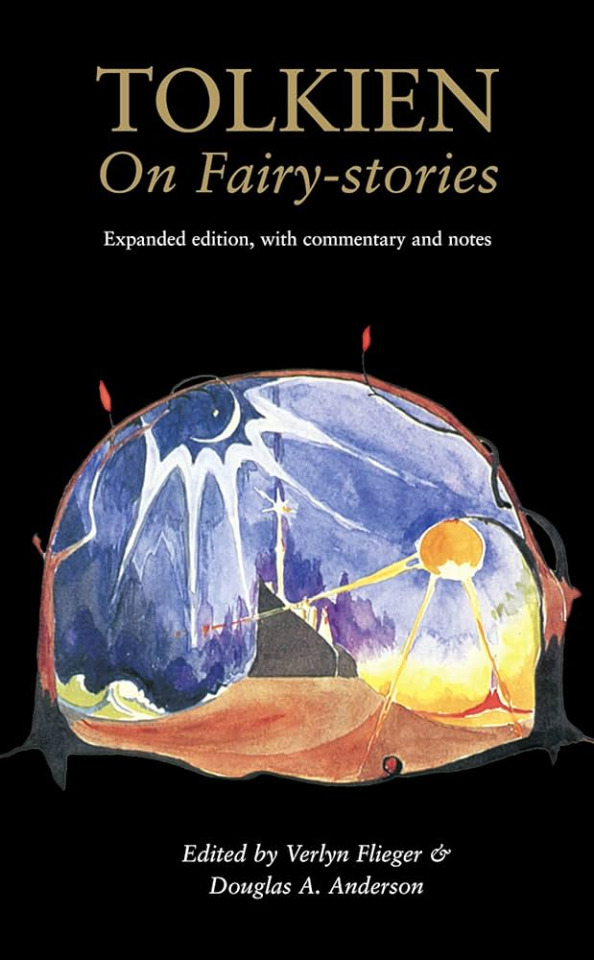
Beatrice Phillports, Mermaids
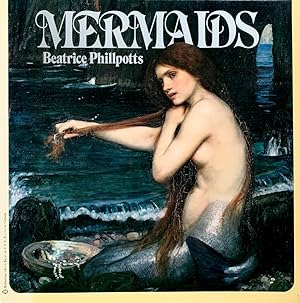
Richard Carrington, Mermaids and Mastodons

Gwen Benwell and Arthur Waugh, Sea Enchantress
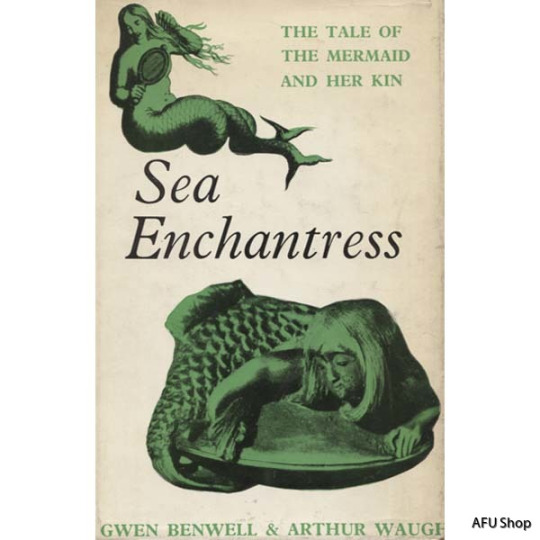
The Lost Gods of England, Brian Branston

Wilfrid Bonser, A bibliography of folklore

Masaharu Anesaki, Japanese Mythology (also known as the History of Japanese Religion)

F. J. Child, The English and Scottish Popular Ballads

Moncure Daniel Conway, Demonology and Devil Lore

T. C. Croker, Fairy Legends and Traditions of the South of Ireland
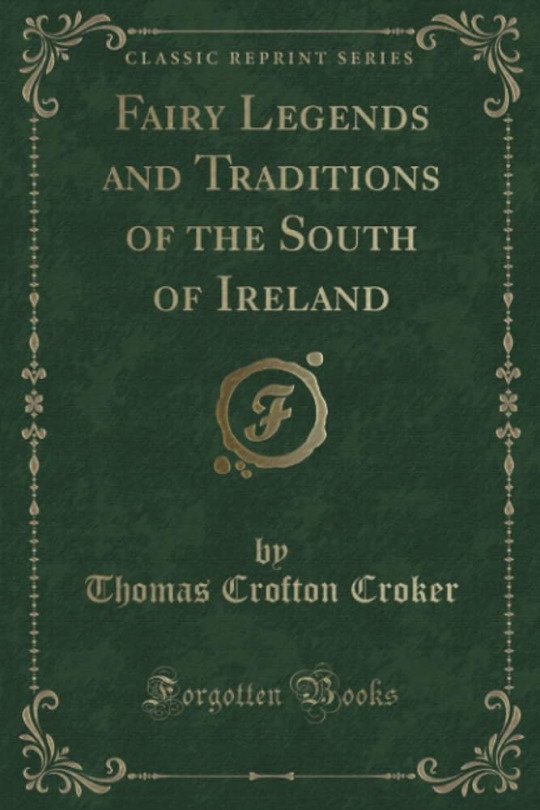
N. Belfield Dennys, The Folklore of China [The book has the very unfortunate subtitles "and its affinities with that the Aryan and Semitic races", but it was written in the 19th century so...)

David Crockett Graham, Songs and Stories of the Ch'uan Miao

Thomas Keightley, The Fairy Mythology
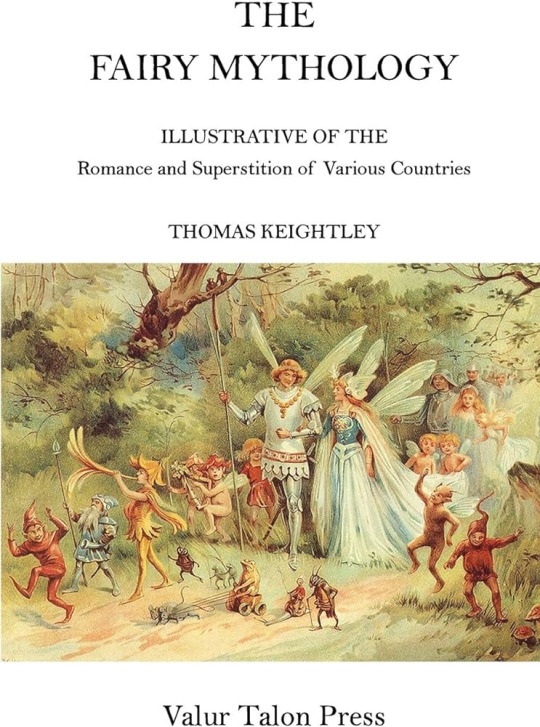
P. Kennedy, Legendary Fictions of the Irish Celts

John Rhys, Celtic Folklore: Welsh and Manx
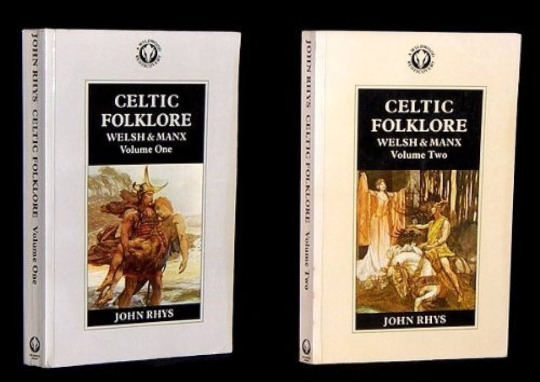
Sir George Webb Dasent's translation of Popular Tales from the Norse

The Norse Myths (as rewriten by Crossley)
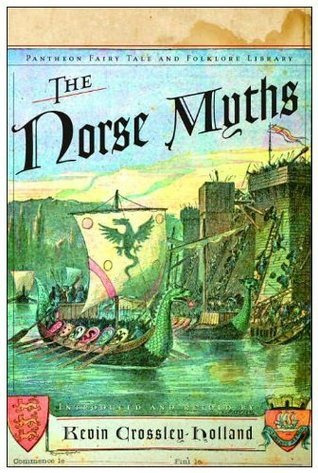
Delaporte Press' Great Swedish Fairy Tales, illustrated by John Bauer

Inger and Edgar Parn d'Aulaire, D'Aulaire's Trolls (also known as D'Aulaire's Book of Trolls)
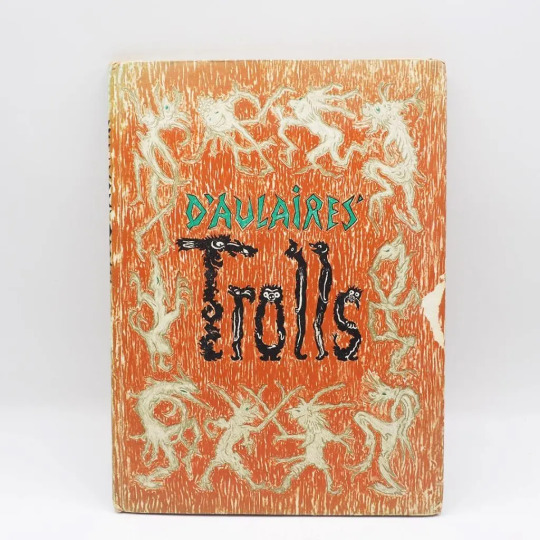
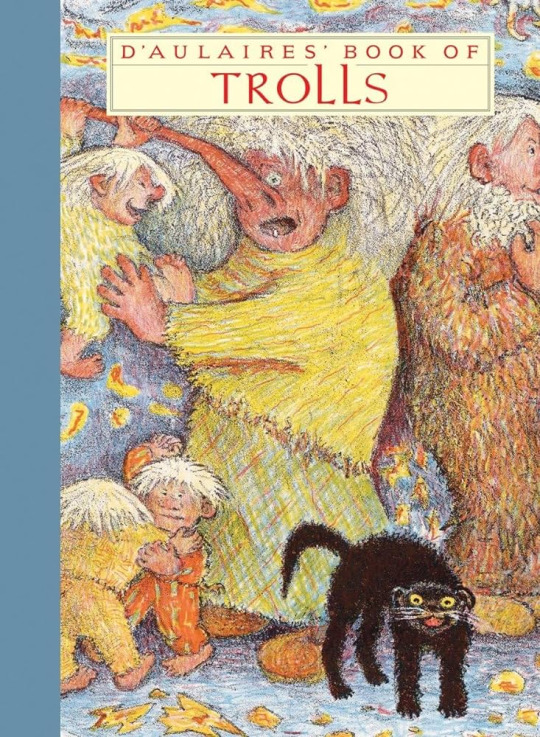
The Florence Ekstrand edition of Theodore Kittelsen's Norvegian Trolls and Other Tales
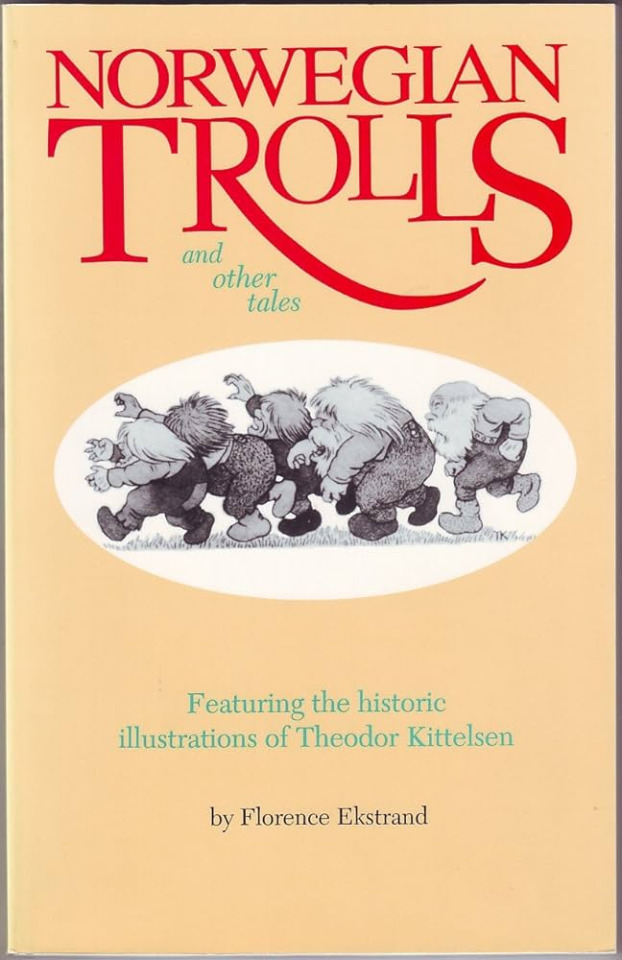
G. Fox, The Archaeology of the Cambridge Region

Edward L. Gardner, Fairies

M. Geoffrey Hodson, The Kingdom of the Gods

Sir Arthur Conan Doyle, The Coming of the Fairies
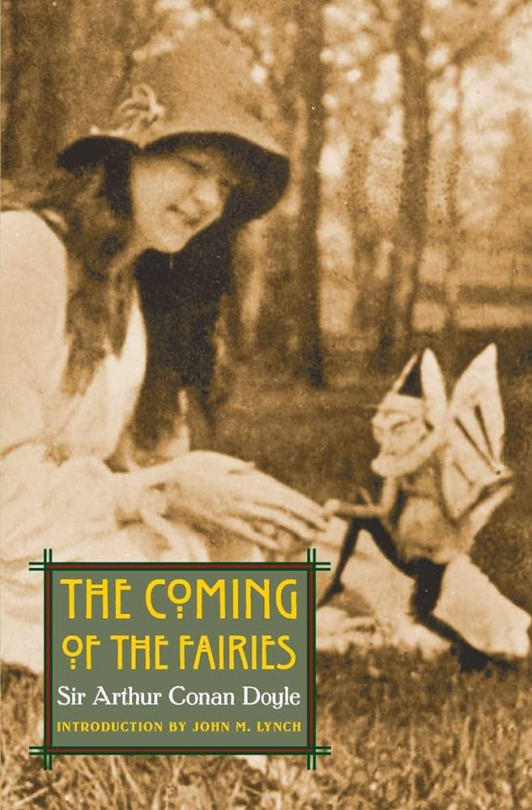
Walter Burkert, Ancient Mystery Cults

Sabine Baring-Gould, Curious Myths of the Middle Age
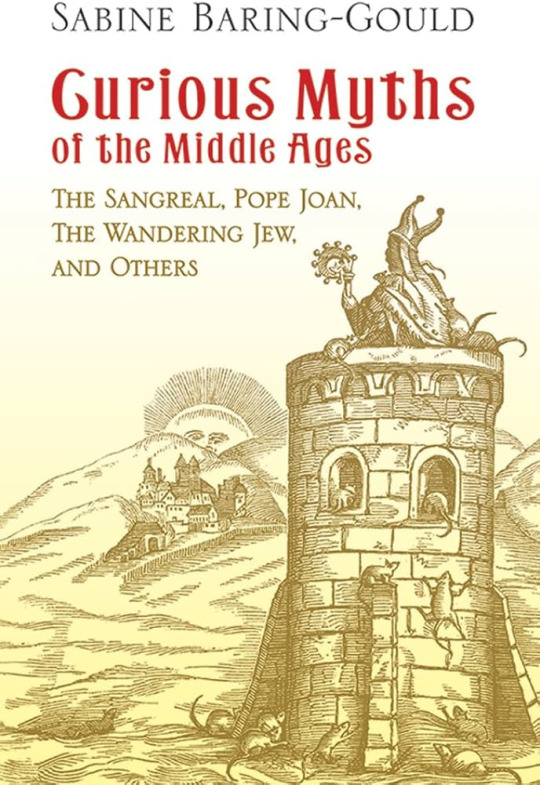
#pierre dubois#bibliography#book list#resources#fairy tales#fairytales#book resources#mythology#folklore#folklores#fairies#fairy#fairy book#mermaids
13 notes
·
View notes
Text
Okay 200 pages into Babel now and y'know, it's probably just because I know more 19th century continental European history than English, but I'm continuously wishing for the obviously political implications of 'language' being a natural metaphysical category to be, like, explored. Spring of Nations! Linguistic standardization! The creation of national literatures! Can you imagine how desperate how Young Italian or Panslavist would be to use magic to prove how expansive their glorious national community was?
Like it's mentioned as kind of a cute quixotic side project someone at Babel has to try and foster Gaelic or Manx revivals and like, yeah, it is kind of awkward that in this extremely about-imperialism book the sponsoring of linguistic diversity among its subjects would be an utter imperative for any imperial power (rare 19th century Habsburg win! Sun never gonna set on this Austrian empire!)
26 notes
·
View notes
Text
Petition to change the name of Mabon to Mheillea
Why???
Mabon was named arbitrarily
Aiden Kelly says it wasn’t arbitrarily but his reasoning seems arbitrary to everyone else, it’s basically just that he found an obscure Welsh god named Mabon ap Modron who had been kidnapped as a child similar to how Persephone had been
the name Mabon (nor its namesake deity) has nothing to do with fall
the name was picked in the 1970s there’s no real historical ties to the equinox (which has been celebrated for millennia)
Mheillea is literally Manx for Harvest and it pops up in Manx harvest celebrations around the equinox (like the holiday Yn Mheillea)
Manx history doesn’t get enough love or recognition in neopagan circles (especially compared to the Irish names that half of the sabbats are named from)
It’s a very pretty name that shouldn’t be left to die out (MELL-ee-uh)
Unlike Mabon, Mheillea is a historically-relevant name already tied to autumn and the equinox
Will this catch on????
Probably not, i have no reach
Will that stop me???
no :)
anyways i might even start tagging things as Mheillea instead of Mabon on here even though that might be confusing to other people who are new here. We’ll see if i stick to it or give into peer pressure.
#mabon#mheillea#wheel of the year#autumnal equinox#wicca#wiccan#sabbats#harvest#mabon sabbat#yn mheillea#witch#witchcraft#pagan#paganism#neopagan#neopaganism#equinox#fall equinox#autumn equinox#september equinox#about this blog#reference#my thoughts
17 notes
·
View notes
Text
Seeing as I've been blocked for daring to say this on other posts.
I'll put my point over right here.
Yes. Our English leaders have done some shitty stuff across the world over time.
Including to our nearest neighbours in Wales, Scotland, Ireland, Cornwall and The Isle of Man.
But as the biggest majority of our English ancestors didn't even get to vote on the running of our country, until the early 20th Century.
I don't see why we have to be constantly wearing sack cloth and ashes.
That does diddly squat to build a better future. And nothing changes the past.
Being English doesn't come in only two 'flavours'
1. English Supremacist
2. English Self Loathing
Neither of these is good, either for ourselves or the rest of the world.
But they're the only two that are focused on.
Many more of us have a healthy love of our country, whilst being aware of the failings in our history that need healing.
We want the countries that used to be under British Empire rule to do well in their independence. Whether they chose to remain with us as Commonwealth Cousins, or broke ties completely.
We respect that Wales, Scotland and Ireland aren't exactly the same as us. And they have their own languages that they want to preserve. I wish them the best with that.
The Cornish and Manx languages aren't quite so well known. But I hope they have enough supporters to survive.
Yes. We have our share off assholes that make us all look bad.
But they don't have the support of the rest of us.
For decades we've been a multi cultural mix of peoples united by calling England the land of our birth.
And that's been good in many ways.
But we should be able to celebrate this, whilst also preserving the customs and traditions practiced by our forebears for hundreds of years.
113 notes
·
View notes
Text
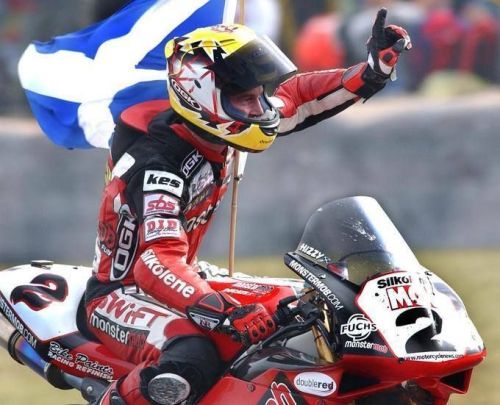
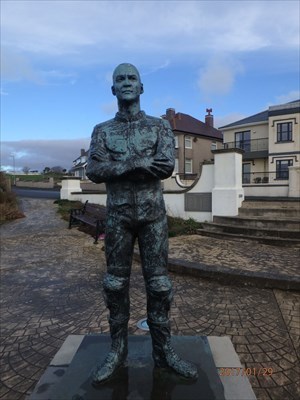

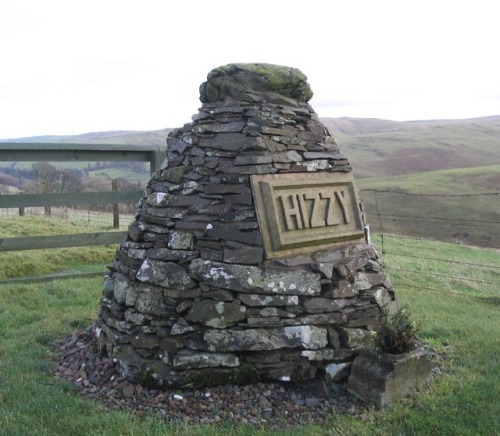
On July 30th 2003 Multi race winning Motorcyclist, Robert Steven ‘Hizzy’ Hislop died.
Hizzy, as he was affectionately known once said “If I’d never thrown my leg over a bike, I’d never have lived.”
Robert Steven Hislop grew up in the village of Chesters, near Hawick in the borders. His father started the interest of both he and his brother Garry in motorcycle racing. This was short lived at the time as he lost his father and a few years later his brother was killed at Silloth circuit. He ended up with a serious alcohol problem which led into depression.
Hizzy thankfully recovered and began his Isle of Man road racing career in 1983 by finishing second in the newcomers’ race at the Manx Grand Prix.
On short circuits, his first championship success came when he won the 250cc British Championship in 1990. Superbike victory followed with the British Superbike Championship in 1995. Some attributed his success to James Whitham leaving the series mid-season to deal with cancer.
Although he did not take a BSB victory in 1996 or 1997, Hislop was hired by Rob McElnea’s dominant Cadbury’s Boost Yamaha team for 1998. The nature of the fight for the championship between Hislop & team mate, fellow Scot. Niall Mackenzie, was illustrated by a near-collision on the last lap at Snetterton which cost the team a 1-2 finish. Hislop generally matched his countryman before a serious crash took him out of title contention.
His last championship success came in 2002 when he won the British Superbike Championship riding a Ducati. A notable feature of his season resulted from Hislop lapping Donington Park circuit more quickly on a superbike than the fastest Moto GP machine: Hislop’s modified production Ducati was heavier and less powerful than the bespoke Grand Prix bikes.
The 1992 Senior TT was described as an absolute classic. It is often described as one of the best races in TT history.
After their successful 1991 TT on all conquering Honda RVF machines, Hislop and Carl Fogarty had not planned to return in 1992. However, they both lined up on the Glencrutchery Road that year on unfancied machinery: Hislop was ona Norton with Fogarty on a Yamaha. The Norton Hizzy rode had been developed on a shoe string budget when compared with the Japanese competition. John Player had no intention of backing Steve’s TT campaign but after scratching around for some support and with minimal testing time, the team headed for the Isle of Man.
Hislop’s Norton took to the circuit in the unconventional white livery of Steve’s long term sponsor Abus. Hislop and the team defied the bike’s detractors by taking a fine 2nd place in the opening TT F1 race. The bike proved it could complete 6 laps of the gruelling Snaefell Mountain Course in hot weather so the team looked forward to Friday’s Senior TT.
Hislop’s main rival was Foggarty, who started at number 4. Steve started at 19. Not only did this give Hizzy more traffic to contend with but it also gave the crowd an anxious wait as the officials calculated the time difference between them. As the race progressed, the two riders smashed records they set the previous year with Hislop taking a narrow advantage into the final lap. In a last-ditch attempt to catch Hislop, Fogarty recorded a record lap time of more than 123 mph on his Yamaha. It was all in vain however as Hislop guided the fly splattered Norton home to an historic win. This was one of Hislop’s greatest achievements and one of the most popular TT wins. Carl Fogarty’s lap record stood for 7 years.
Hislop and Fogarty went on to become two of Britain’s most successful motorcycle racers, winning many races and championships. It was the 1992 Senior TT that saw them battle together for the last time.
Described by some as a flawed sporting genius, success in the world championships never materialised for Hislop. This was possibly because of a self-destructive aspect to his character. The flaw may have led to a number of well-publicised clashes with other riders and teams in the British championships which hindered progress into international series.
Having lost his brother and many friends in motorcycle accidents, he made a point of never going to the funerals of fellow racers, saying:
“Some people might find that a bit callous. I only ever attend family ones and people find it a bit strange that I won’t go to a friend’s funeral, but it’s just my little way of shutting off.”
Steve Hislop died in a helicopter accident in July 2003, near Teviothead, Roxburghshire and was interred in the village of Chesters near his birthplace of Hawick, Scotland. He had two children.
There is a bronze statue in memory of Hizzy in the grounds of Hawick Museum. at Wilton park and another at Onchan Head, Isle of Man, as seen in order in the pics. The last pic is a cairn near Teviothead, the scene of the helicopter crash, it reads……
‘Hizzy’
This cairn was built by a
few friends of Steve Hislop,
British Superbike Champion,
who was tragically killed in a
helicopter accident near this site,
on July 30th 2003.
Kind permission was granted
by His Grace
The Duke of Buccleuch.
28 notes
·
View notes
Note
❛ I've never had anything good happen to me when I trusted others. ❜ He had been adamant in nature, staging his tone with her to be curt. Yet beneath it's composure laid his fracture; a hint in demeanor parallel to the ruse upkept.
That he favored her company, her opinions whenever he could obtain them. More often than what he led on, when taking her defense into consideration. Her voice of reason surprisingly making indentations upon his cognitive wall.
Aurora snapped her head up from the book she had been reading, placed in her skirt-clad lap, at Charlie's words of admission to her.
Her hazel doe-eyes were soft as she looked at Charlie, "I know," she replied quietly, her voice ringing out like a crystalline bell in the quiet space between them. The Historian knew very well what the older Creative had gone through thanks to her Scrapbook and their rather rocky first meeting.
One of her hands left the pages of her book, A Midsummer Night's Dream and she tentatively brushed a finger against Charlie's hand before she entwined her index finger around his own, "I'm sorry that you've been through hell and back before but you can trust me."
Aurora let out a small sigh, "Besides, not like you can get rid of me that easy Charles. I'm here to stay. Maybe I'll break the cycle of bad things happening to you. Who knows?"
She untangled her finger from Charlie's own before returning to her book.
@wraith-of-christmas-future
2 notes
·
View notes
Text
Lughnasadh
Learn about the holiday of Lughnasadh and how you can celebrate!

Photo Credit: Polina Rytova
What is Lughnasadh?
Pronounced LOO-nah-sah, Lughnasadh is an old Gaelic festival named after the god Lugh. The name “Lughnasadh” is Old Irish for (roughly) “The Gathering of Lugh”.
Also called Lúnasa (modern Irish), Lùnastal (Scottish Gaelic), and Luanistyn (Manx Gaelic).
Lughnasadh starts at sunset on July 31st and ends the night of August 1st, being halfway between the Summer Solstice and the Autumn Equinox; the holiday is one of four known Seasonal Festivals of the Gaelic-speaking people, the others include Beltane, Samhain, and Imbolc.
Note: The Holiday is held on January 31st – February 1st in the Southern Hemisphere!
Who is Lugh?
Lugh has many epithets, including (but not limitied to) Lugh Lámfada “of the long arm”, Ildánach ”the Skilled God” , and Macnia “the Youthful Warrior”.
He is the god of many skills, art, and justice. Though he also had a trickster side.
Lugh is also linked to lightning and the sun due to the etymology of his name; Lugh has been suggested to translate as “light” and one of his many epithets is “The Shining One”.
Feel free to read more about Lugh in this Deity Guide I wrote for him or look at the references and further reading section below!
History, Lore and Traditions
The Holiday may be named after Lugh, but one of the more popular myths around Lughnasadh is that Lugh had created it in honor of his foster mother, Tailtiu, who died of exhaustion after readying the fields for agriculture.
Competitive games, particularly the Tailteann Games or Áenach Tailten (modern spelling: Aonach Tailteann) were held during this time.
Feasts were had, as the holiday originated in legend as a funeral feast for Tailtiu.
Holy wells were visited during Lughnasadh, much like the other Celtic holidays. People would pray and offer coins (or clooties) while walking around the well clockwise.
As Lugh is also the god of oath-keeping and justice, contracts were signed and diplomatic meetings were held during Lughnasadh.
Matchmaking and hand-fastings were held on Lughnasadh. Specifically trial marriages were started on this day, with a trial period of a year and a day; you could finalize it after the year’s end or end the marriage.
Bonfires were sometimes lit but were not necessarily a huge part of this particular holiday.
Traditionally for Lughnasadh, folks would take the first corn of the harvest and climb to the top of a hill or otherwise high location to bury it as an offering.
A sacred bull would also be sacrificed sometimes, and the meat of the bull would be a part of the feast. The bull would then be replaced by a new, younger bull for the next year’s festival.
The exact traditions of the holiday would vary based on the culture, location, and even family of those celebrating it.
A Note on Lammas
Often conflated, Lammas, the two holidays share many similarities but are different in origin and history. Lughnasadh is Gaelic and Pagan whereas Lammas is Anglo-Saxon and Christian.
In the References and Further Reading section below you can read a great blog post about it titled “A Little History of Lammas” in which the author puts it perfectly:
Conflating these two holidays:
"...is not just an oversimplification but also culturally tone-deaf; even if they have linked origins - and that's a big if - the Irish and English festivals have very different histories, and have to be understood within their different cultural contexts.”
Modern Day Lughnasadh
Correspondences
Note: Any historic or traditional offerings will be marked with a (T). Your offerings do not have to be historic to be valid, this is just my way of categorizing!
Deities
Lugh is obviously the main deity for this holiday historically.
Other deities that honor harvests and agriculture and such could also be celebrated on this day. A few examples include:
Osiris
Demeter
Ceres
Freyr
Colors
Warm colors like orange, yellow, and gold.
Warm brown tones.
Earthy Green
Herbs and Plants
Corn (T)
Wheat (T)
Basil
Calendula
Chamomile
Echinacea
Fennel
Lemon balm
Marjoram
Nasturtium
Rosemary
Sage
Sunflowers
Sweet alyssum
Thyme
Yarrow
Stones/Metals/Crystals
Gold
Citrine
Tiger’s eye jasper
Ruby
Hematite
Spell work
Spells that deal with justice and fairness
Creating contracts with spirits or deities
Spells that deal with abundance
Prosperity spells
Offerings
Coins (T)
Corn (T)
Bilberries (T)
Blueberries
Pies (specifically bilberry or blueberry pies)(T)
Wine (T)
Cake (T)
Activities
Play Cornhole
Play athletic/competitive games
Bake a cake
Prepare a feast (T)
Take a walk and appreciate the coming change of the seasons
Research Lugh, his foster mother, and Celtic history
Climb a hill and bury an offering (T)
Set up or decorate your altar using items from the list above (or your own correspondences!)
These are only some offerings, correspondences, and activities that you could do for Lughnasadh. If you want to celebrate in a different way you certainly can!
Citations and Further Readings
Lughnasadh - New World Encyclopedia
Lugh - Mythopedia
A Little History of Lammas by A Clerk of Oxford
July Garden - Tenth Acre Farm (used for herbal references)
Lammas - Britannica
---
Edited for accuracy
258 notes
·
View notes